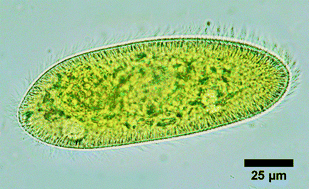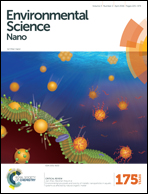Evaluation of toxicity of nanoclays and graphene oxide in vivo: a Paramecium caudatum study
Abstract
We report here the successful use of a protozoan model organism P. caudatum to investigate the toxicity of clay nanoparticles (montmorillonite, halloysite, kaolin, and bentonite), silica nanospheres and graphene oxide nanoflakes. The distribution of nanoparticles inside the cells was investigated using enhanced dark-field microscopy. Biochemical and behavioural tests were employed to study the viability, vitality, nutrition and oxidative stress induction in ciliate protozoans. The nanoclay particles studied here exhibited very low or no toxicity towards P. caudatum, whereas graphene oxide was toxic.


 Please wait while we load your content...
Please wait while we load your content...